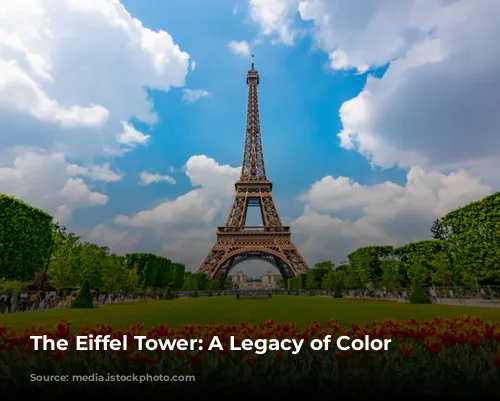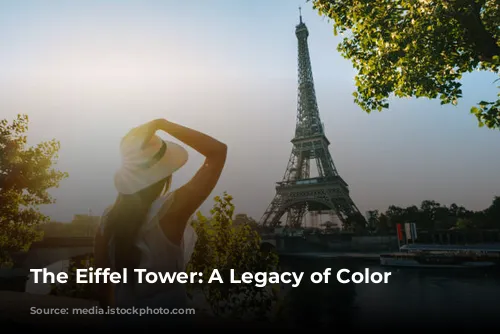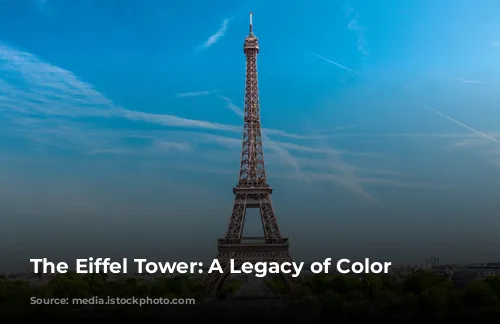Prepare to be amazed by the iconic Eiffel Tower’s vibrant history, a journey through time painted in various shades. The Eiffel Tower is not only a symbol of Paris, but also a testament to the evolution of color trends throughout the 20th century.

A Golden Touch for the Olympics
Back in 2017, the Eiffel Tower donned a festive attire, sporting the Olympic colors to signify Paris’ bid for the 2024 games. As the tower neared its 132nd birthday, it was also undergoing a significant makeover – a restoration to its original “yellow-brown” hue, giving it a gilded look.
Patrick Branco Ruivo, Managing Director of Sete, the company that operates the tower, enthusiastically described the transformation as “a slightly more gilded look for the Olympics, rather than the color we’re used to.” He invites onlookers to check out the top portion of the tower, where the new color is already evident, adding a “metallic and shiny sheen” against a clear Parisian sky.
A Twist in the Plans
While the renovation was meant to be a tribute to the tower’s heritage, unforeseen complications arose. The pandemic, a global event that threw a wrench into many plans, delayed the painters’ work, which began in 2019. Adding to the challenge, the discovery of high levels of lead in previous paint layers further complicated the process.
As a result, the Eiffel Tower, in its 20th paint campaign since 1889, won’t be completely ready for the 2024 Olympics. Only specific sections will be repainted, marking a partial return to its golden glow from the early 20th century.
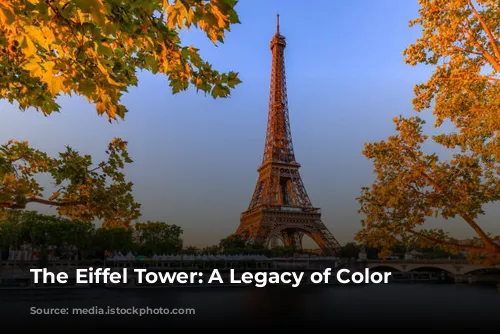
A Spectrum of Hues
The Eiffel Tower has witnessed a remarkable journey through a rainbow of colors, each reflecting its unique period and reflecting the changing artistic sensibilities of the time.
In 1887-1888, during its construction, the tower was originally painted “Venice red,” a shade specifically created for the Italian city during the Middle Ages. The architect, Gustave Eiffel, himself chose this color, hoping to capture the spirit of the Italian Renaissance.
Just two months after its completion in May 1889, the Eiffel Tower received its first makeover, shedding the Venice red for a shade of reddish brown. This was a departure from the original design, but a move that sought to blend the tower seamlessly into the Parisian landscape.
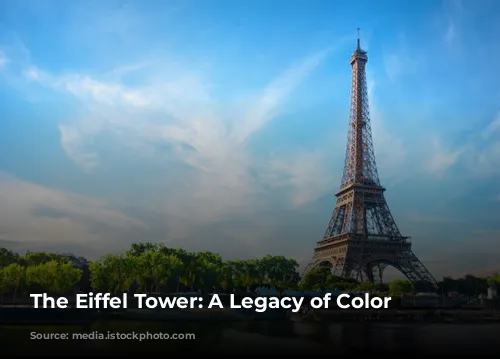
From Ochre to Yellow-Brown
Three years later, in 1892, the Eiffel Tower underwent its first major renovation. During this time, it was adorned with a new ochre-brown color, a shade that graced the tower for seven years. This was a period of experimentation, a period in which the Eiffel Tower sought to establish its own identity, distinct from its original design.
The 1900 Universal Exhibition presented another opportunity for a makeover, and this time, the Eiffel Tower was painted with brown ochre, but with a subtle gradient, transitioning from orange at the base to light yellow at the top. This change was not just about aesthetics but also about the practical need for regular maintenance.
This marked the beginning of a seven-year repainting cycle, a tradition that continues to this day, ensuring that the tower remains a gleaming centerpiece of the Parisian skyline.

A Touch of Elegance
1907 marked a significant turning point in the history of the Eiffel Tower. At the instigation of Gustave Eiffel himself, the tower was given a lighter shade, a yellow-brown tint that was destined to remain for over a century.
This color, chosen by the architect who gave the tower its iconic shape, became synonymous with the Eiffel Tower, symbolizing its enduring elegance.
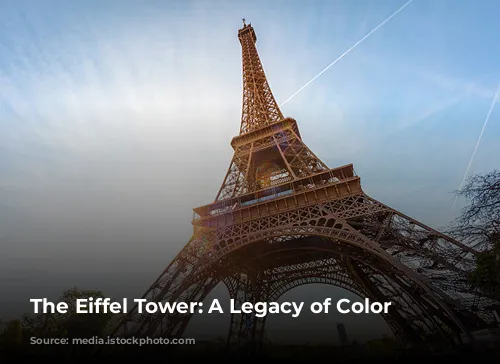
Reddish-Brown Revival
In 1954, the Eiffel Tower was given a reddish-brown hue, a color that stood out against the Parisian sky. This shade marked a return to the tower’s early colors, signifying a shift towards a more traditional aesthetic.
Two years earlier, a lighthouse was installed at its summit, further enhancing the tower’s prominence on the Paris skyline. This marked a turning point, a period in which the Eiffel Tower evolved from a structure of steel to a beacon of hope and progress.
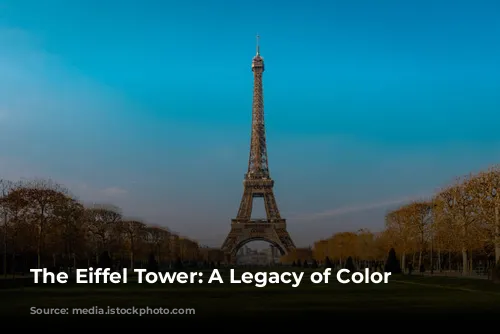
The Iconic Eiffel Tower Brown
Finally, in 1968, the 324-meter high tower was painted with its now-famous “Eiffel Tower brown,” a specially crafted shade. This color, a blend of brown and gray, solidified the tower’s position as an enduring symbol of Paris, a timeless landmark that continues to capture the imagination of millions.
The Eiffel Tower’s journey through a spectrum of colors reflects its evolution, from its early days as a daring architectural feat to its enduring legacy as a symbol of Parisian elegance and innovation. Its history, captured in every shade, is a story of change, resilience, and the enduring power of a landmark that continues to inspire.
